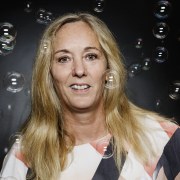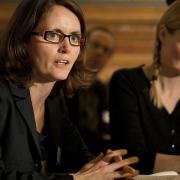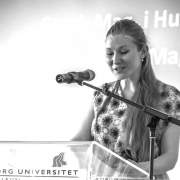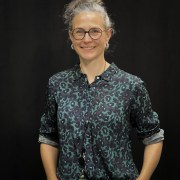It is well known that the planning and development of an exhibition is a complex task. Throw in a scientific research team and you’ve got yourself an (exciting!) challenge.
How can the slow process of research feed into the faster momentum of exhibition development? When, where and how can we share findings, feedback and ideas inside exhibitions? What implications does more added research have on the exhibition development process? Do developers have to wait years for a peer reviewed article, or is there a better way for both researchers to collect and build data, and for developers to incorporate thoughts and suggestions in exhibition making?
Hear from four organisations that have embarked on this journey.
Facilitator
Programme Manager - International Relations and Learning
Hellerup
Denmark
Session speakers
Associate Professor
Aalborg University Copenhagen
Experimentarium is taking steps towards developing a model for future research-based exhibition collaboration and we want you to join the ride. Using a methodological approach that draws on aspects of design-based research (Brown, 1990) and action-based research (McNiff, 2013) can perhaps help answer the question: How can you develop a model for cross-disciplinary research-based exhibition practice? We show examples of what the future plans are pointing towards.
Research and Development Assistant
Copenhagen
Denmark
Is it just paper for the shelf? At Experimentarium we have been working with the project and exhibition PULSE which, as a new aspect, has research goals such as papers and conference presentations included in the application and aims. The Exhibition is now finished and now the research is focusing on gathering data in the exhibition for papers. But what does the developers get out of it? We want to share experiences on how research and the exhibition team can('t) communicate and how research have had and can have an impact on the exhibition.
Researcher
Phänomenta
Germany
The latest collaboration between „Phänomenta“ and research focuses on social and educational inclusion. The collaboration unites competences that are important for successful research and practice in this field. The Science Centre has, over decades, gathered experiences in creating exhibitions and interactive exhibits. The University contributes with know-how in science education. In this talk we will present our experience of such a close collaboration and concretize about our collaboration.
Exhibition Producer
Vantaa
Finland
I will share our experiences from Heureka on two very different exhibition projects, where we collaborated with a research group. In both of them, a part of a scientific study was conducted at Heureka, and both of them resulted in exhibits. In one of them the data was collected from our basket ball rats, and in the other one from our visitors.
I will tell about these two projects, the process of working together with the scientists, and what each party has got out of it to this day.





